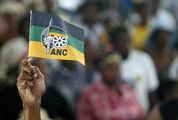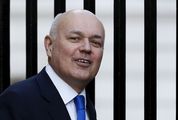HAD it been released on any other day, the new White Paper on the proposed National Health Insurance (NHI) system might have made much bigger headlines, and led to much louder cries of outrage.
The release last Friday paled into relative insignificance on one of the worst days yet on SA’s financial markets, and coverage of the report was fairly muted.
Health Minister Aaron Motsoaledi got off quite lightly for releasing a white paper that at best is disappointing given that it has taken four years to produce, supposedly with input from hundreds of interested parties on the Green Paper issued in 2011.
The new document outlines ambitious plans to implement the NHI system in three phases over 14 years, providing all South Africans with services free at the point of delivery.
But it offers no meaningful new data on what this will cost, how it will be paid for and by whom. Nor is it specific on the details of the health-care services that will or will not be provided, or on the constrained role for medical schemes and the private health-care sector.
The document envisages a single NHI fund that will pay for services that will be purchased from public and private providers.
Medical schemes will be limited to providing top-up cover for unspecified "complementary" services.
The objective of delivering free and high-quality health-care services for all citizens is laudable, as is the aspiration to curb steeply rising health-care costs. Without thorough and realistic costing, however, the NHI will remain in the realm of fantasy. A separate Treasury paper on the financing of the NHI was long promised, but no representatives of the Treasury were present when Dr Motsoaledi released the White Paper last week. Instead, the document used R256bn, a number hardly different from the estimate in the 2011 document. It also relies on an economic growth projection of 3.5% a year that now seems fantastical given that growth is stuck at 1.5% or less.
The document suggests various taxes that could be raised to fund the NHI shortfall, estimated to be from R28bn to R108bn. But, it gives no indication of how such taxes would be raised in a way that "does not damage growth or affect the poor negatively", as promised by Finance Minister Pravin Gordhan this week.
In changing SA’s rating outlook to negative this week, ratings agency Moody’s noted that expensive new programmes the government was considering, such as nuclear and the NHI, were evidence political pressures were growing, casting doubt on the ability of the government to stick to its commitment to restrain spending.
If SA fails to curb spending, a ratings downgrade will follow, with many negative consequences. An NHI proposal that does not take that on board is simply reckless.
For the NHI to be acceptable, it must appeal not only to the middle class, but to workers, too, whose trade unions have fought hard to ensure they can access private healthcare through medical schemes, rather than having to rely on the dysfunctional public health-care system. An NHI that would erode the quality of healthcare that people on medical aid already have would surely be open to legal challenge.
Of even more concern is that it might drive away skills, not only the private doctors and health-care providers who might not be happy to work with a centralised NHI, but everyone with medical aid and who can choose health-care providers now, but might not be able to do so under the NHI.
Fixing public healthcare facilities is a welcome part of the plan. But raiding the coffers of the private sector in the belief that it would somehow mean better public healthcare for all is not a viable or economically healthy option.
The biggest shortcoming of the White Paper is that it does nothing to allay legitimate fears about NHI promises.





















Change: 1.19%
Change: 1.36%
Change: 2.19%
Change: 1.49%
Change: -0.77%
Data supplied by Profile Data
Change: -0.19%
Change: 0.69%
Change: 1.19%
Change: 0.00%
Change: 0.44%
Data supplied by Profile Data
Change: 0.62%
Change: 0.61%
Change: 0.23%
Change: 0.52%
Change: 0.12%
Data supplied by Profile Data
Change: -0.21%
Change: -1.22%
Change: -0.69%
Change: -0.51%
Change: 0.07%
Data supplied by Profile Data